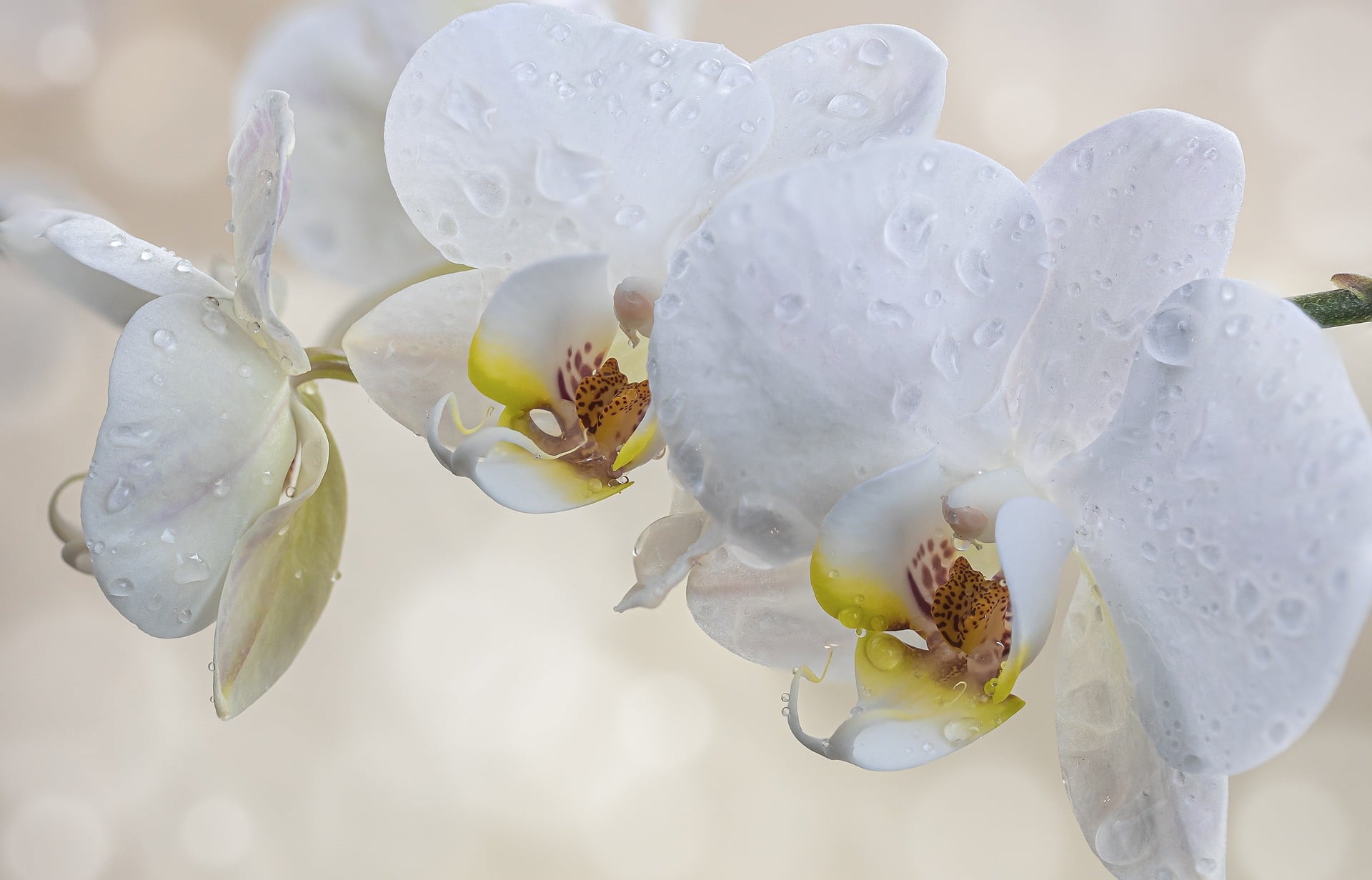Do you know that you can learn how to grow orchids in water by preparing the plant and container and maintaining the plant? These three easy steps are excellent for novice gardeners, and you can add the skill to your arsenal for gardening. Additionally, hydroponic orchid growing or water culture is a useful remedy if your orchid seems weak.
You can unpot the orchid and examine its roots for issues. Afterward, you can grow it in water to address the problems while keeping the ideal conditions. If you have a greenhouse, you can do hydroponic orchid growing inside as well.

Remember that this environment is optimal for the growth of orchids, that even if you dye them blue, they will stay healthy. Additionally, most orchids are epiphytes, so one can expect that they are a bit meticulous to where they would grow.
How To Grow Orchids In Water The Best Way
As mentioned earlier, most orchids are epiphytes and picky in their growing environment. For hydroponic growing of orchids, opt for terrestrial orchids. Why terrestrial orchids?
Generally, they thrive in moisture, making them ideal for hydroponic cultivation. Growing orchids in water will provide this requirement from soaking while still preventing rot and other potential problems. It’s also worth noting that not all hydroponic or water culture of orchids are the same.
For example, some gardeners use a culture pot for the plant and an outer reservoir pot for the nutrient solution. This method improves the airflow around the roots, and you can quickly check when or when not to water the orchids.
Prepare plant
The water culture of orchids requires preparation of the plant itself. Remove the orchid from its pot and make sure that it is free from the previous media. If the roots are tangled, be gentle in teasing them out.
After the initial removal of media, rinse the roots and check for any rotten parts. Use sharp and sterilized pruners to cut them out. You might also benefit from using hydrogen peroxide or anti-fungal powder to ensure the cleanliness of its roots.
This initial preparation is crucial because root rot will affect the success of your hydroponic orchids. Once you’re happy with the resulting plant, you can place it in the new container. However, ensure that it is big enough to accommodate the growth of the roots.
Prepare container
What is the best container for growing orchids in water? Most experienced gardeners would recommend something with high curved sides that is also transparent for more comfortable viewing of growth and dirt. The container also stabilizes the plant and prevents it from flopping over as it grows.
Speaking of supporting the plant, you want the orchid to stay upright. Use some clay pebbles at the bottom of the container to help the roots. As a bonus, this also prevents the rotting of the crown since it is off the moisture.
Once you have the container, the next material to check is the water. Tap water is not advisable because some areas have contaminated sources with chemicals. Of course, these chemicals can be detrimental to orchids.
The safe choice is using distilled or, better yet, rainwater. Before planting, make sure that it is lukewarm as well to prevent shock.
Maintenance
Remember to change your water weekly or bi-weekly so that it is free of any contaminants or pathogens. This also makes an excellent time to fertilize the orchids. Otherwise, it can be feasible to soak the orchid for two days and then dry for five days if this will help with its growth.
Using airstone can also help supply the orchid’s optimal oxygen requirements if you see signs of oxygen depletion. What about the other provisions of orchids? Using a greenhouse will not only encourage growth but also blooming of the orchids grown in water.
For example, the temperature is easier to manage indoors, and you can conveniently place the grow light at the ideal distance from the orchids. As the University of Vermont Extension mentioned, these factors are influential to the growth of orchids. Check the specific requirements of your orchids and adjust the environment accordingly.
What Is Passive Hydroponics For Orchids?
When growing orchids in water, you might also come across the passive hydroponics method. This process includes adding nutrients to the water, and the capillary system will bring it to the roots. Additionally, passive hydroponics uses perlite, gravel, clay pebbles, or charcoal to act as an inert and wicking medium.
When the reservoir is low, you’ll flush the substrate with lukewarm water, so the air pockets deliver oxygen to the orchids. To further help with wicking moisture to the roots, the orchids’ container has side drainage holes and the reservoir at the bottom.
Conclusion
Orchids are beautiful flowers, and they grow in a variety of mediums. If you want to skip soil, you can learn how to grow orchids in water in three steps. Prepare the plant, container, and ensure maintenance throughout the growth of the orchids.
It would be best if you also remember to use terrestrial orchids as they are more suitable for water culture. They thrive in moist conditions and will grow well in water compared to epiphytic orchids. The overall method of growing orchids in water is easy even for beginners, and you can also learn about the other techniques, be it using two pots or growing passively.
